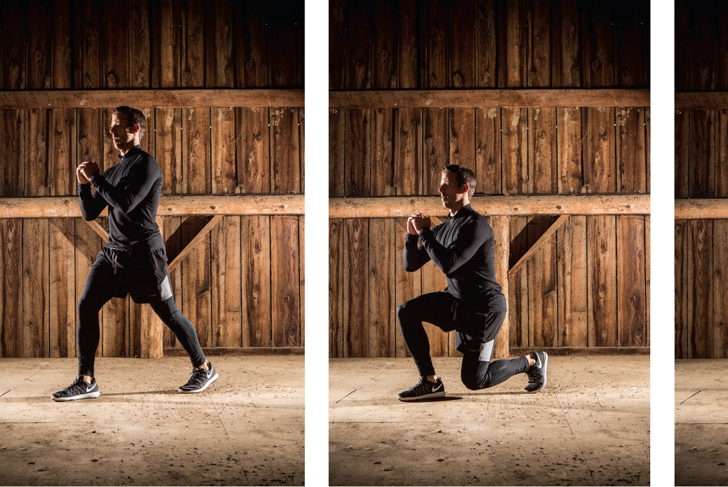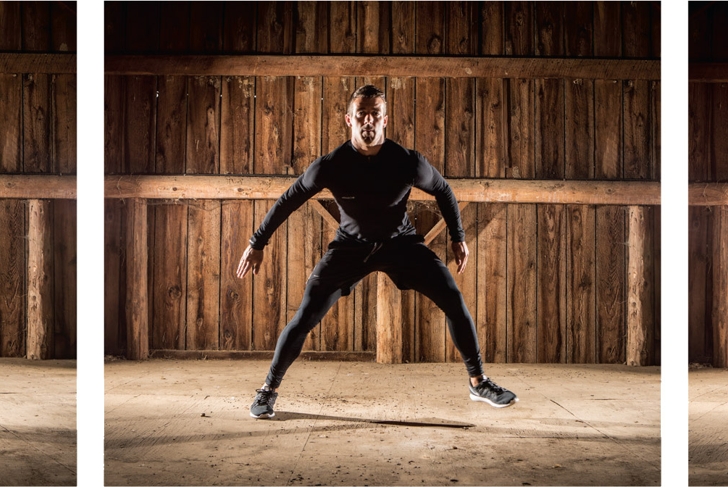
It’s a gorgeous, sunny morning as we pull up to Rogers Pass just outside of Revelstoke, BC, and I’m about to embark on my first backcountry snowboard mission. As we begin our ascent, clean mountain air fills my lungs and raw beauty envelops me. The climb is challenging, and as my heart and breathing rates increase, I realize that these are the precious moments I train for.
Winter is typically associated with shortened days, decreased sunlight, and less than ideal workout conditions. But don’t let that discourage you from getting outdoors. Canada possesses endless terrain for winter activities—vast expanses of land conducive to the adventurous soul. A few wintertime favourites include skiing, snowboarding, snowshoeing, and cross-country skiing.
Immersing yourself in winter sports is a great way to stay active. However, being ski and snowboard ready requires more than just a weekend warrior mentality. Chances are if you’re ill-prepared, your performance will suffer and your likelihood for injury will increase.
Maintaining cardiovascular conditioning, functional strength, and flexibility in the off-season will ensure you’re ready to tackle new winter challenges. The last thing you want is to be exhausted after one or two runs of skiing on an epic powder day. So keep your body mountain-fit!
Why get ski and snowboard ready?
Possessing adequate strength and stamina is important for injury prevention. Studies have shown that the majority of ski and snowboard injuries occur in the second half of the day, when individuals are physically and mentally tired. Maintaining a strong body will ensure your risk for injury is minimized. Also, it will provide you with the confidence to make good decisions, push yourself, and recognize your limitations.
Warm-up for efficiency
A dynamic warm-up is key to preparing your body for any mountain sport. It consists of exercises designed to mimic movement paths you’ll be completing during activity. Warming up helps lubricate joints, activate key muscle groups, increase blood flow, and stimulate your nervous system.
Dr. Jonathon Dugas, an exercise physiologist, says that by increasing the temperature of muscles, the muscle’s ability to contract and produce force is improved.
Here are some exercises that will help prepare your body for your favourite mountain adventure.
Complete 12 to 15 repetitions and 1 to 2 rounds of each exercise.
Jumping Jacks

- Start by standing with your feet together. In one motion, jump your feet out to the sides and raise your arms above your head.
- Immediately reverse the motion by jumping back to the starting position.
- Make sure to land each time with your knees slightly bent.
Squat Jumps

- From a standing position, with your feet shoulder-width apart, push your hips back and lower your body toward the ground.
- Keep your chest up, back straight, and weight over your heels.
- When your thighs are parallel with the ground, drive your hips forward and explode upward.
- Land with your knees bent and continue back into a squat position.
- The movement should be continuous and smooth.
Alternating Jumping Split Squats

- Stand in a lunge position with feet hip-width apart, chest up, and shoulders pulled back.
- Flex both knees and lower your hips, ensuring your forward knee does not extend past your toes.
- When your back knee is almost touching the ground, propel your body upward and reverse the position of your legs.
Reverse Lunge with Overhead Reach

- Stand tall with your chest up, shoulders back, and brace your core.
- Step backward with your left leg until your right knee is bent at least 90 degrees.
- Reach upward and over to the right with your left arm.
- Return to the starting position and repeat on the opposite side.
Speed Skaters

- From a normal standing position, step out to the right and sweep your left leg behind you while bringing your left arm across your body.
- Then step to the left, bringing your right leg behind you and your right arm across your body. Continue alternating sides while building up speed and explosiveness.
- Make it more challenging by jumping side to side.
The benefits of winter exploration
You’ll feel better!
Anyone who lives in higher latitudes knows the negative psychological impact long winters can have. Seasonal affective disorder has been linked to increased fatigue, anxiety, and tension. But exercising leaves you feeling refreshed and rejuvenated by stimulating the production of feel-good chemicals in your brain.
Even being in the presence of nature has positive effects. The mountains offer incredible scenery for which your brain is hard-wired. This is sure to boost your mood and relieve stress.
Your waistline will thank you
For many of us, winter generally means less activity, more time spent indoors, and increased calorie intake. These three elements combined are a recipe for weight gain. Weekly activities such as snowshoeing or skiing along with a regular exercise routine will promote healthier eating patterns and help to counteract those calorie-dense holiday meals.
You’ll connect with friends and family
New experiences are always best shared, and getting up to the mountains with others will give you the opportunity to reconnect. Shredding new lines with friends or exploring a new peak on snowshoes will make for great memories.
Chances are you’ll push yourself more if you’re exercising with others of similar or greater skill level as well. Even more reason to keep your body well-tuned for winter adventures.
You’ll develop greater respect for the environment
Studies have shown that those who spend more time in the outdoors have a greater appreciation for it. In turn, you’re more likely to take steps to conserve it. Subjecting your children to the natural beauty that exists in the mountains will allow them to feel connected to something greater than themselves. Plus, kids will be stoked on life after getting out and frolicking in the snow.
Studies conducted by Dr. Nancy Wells of Cornell University in Colorado suggest that childhood participation with nature may set individuals on a path toward adult environmentalism.
Tip: When venturing into the mountains, choose healthy, lightweight, calorie-dense snacks such as nuts or dried fruit.
Ideas for new mountain adventure
Snowshoe
Challenge yourself by snowshoeing up Hollyburn Peak at Cypress Mountain. Views of Howe Sound and Vancouver will not disappoint. Snowshoeing is a low impact workout suitable for individuals of all ages and abilities.
Alpine touring
Step outside your comfort zone with alpine touring on Mont-Tremblant in the Laurentian mountain range. There are several designated trails that you can climb to access one of the 96 marked ski runs. Ski touring burns between 500 and 600 calories per hour and is a great aerobic workout.
Skate ski
Skate ski in the Callaghan Valley near Whistler, BC. The track is situated within the Coast Mountains range and offers a varying degree of difficulty, depending on your fitness level. Prepare to sweat, though—skate skiing is a full-body workout that combines all elements of training. You’ll burn a ton of calories and utilize muscle groups you forgot you had.
Set out on the road and explore a new mountain. BC and Alberta have some of the best skiing and snowboarding in the world. Each mountain offers unique landscapes and terrain that will challenge your skill set—everything from gladed terrain and technical chutes to feathery, waist-deep powder.
Adrenalin adventures
If you’re looking for some more adrenalin-laced adventure, try fat biking, ice climbing, or cat skiing.




